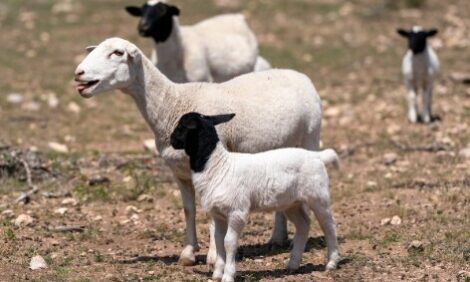



Can we decrease frequency of concentrate supplementation for young growing beef calves?
Dr. Philipe Moriel and Dr. Joao Vendramini, both at the University of Florida IFAS Range Cattle Research and Education Center, set up two experiments to study their hypothesisReducing the frequency of concentrate supplementation (for example, from daily to 3 times weekly) can be implemented to decrease feeding costs. However, this strategy may reduce forage digestion leading to fluctuations in total nutrient intake and hormones and metabolites associated with energy and protein metabolism.
These fluctuations may or may not affect growth, reproduction, and immune function in cattle. For example, concentrate supplementation offered 3 times weekly (Mondays, Wednesday, and Fridays) either decreased or did not affect the growth and reproduction of replacement beef heifers and mature beef cows and their offspring compared to daily concentrate supplementation. In recently weaned beef calves experiencing stress, reducing the frequency of concentrate supplementation worsened their inflammatory response and decreased average daily gain by up to 30% and antibody production against pathogens that cause bovine respiratory disease.
Early weaned beef calves can be separated from their dam at approximately 60 to 90 days of age to increase cow pregnancy rate in the upcoming breeding season. Early weaned beef calves have a relatively small rumen capacity, limiting forage intake. Therefore, early weaned calves must rely heavily on concentrate supplementation to meet their requirements. The impacts of reducing the frequency of concentrate supplementation on growth, forage intake and digestibility of early weaned beef calves consuming cool-season grasses was never reported in the literature.
We hypothesized that reducing the frequency of concentrate supplementation from daily to 3 times weekly would not impact growth performance and average weekly forage intake of early weaned beef calves consuming ryegrass. Therefore, our objectives were to evaluate the growth performance during a grazing period (Experiment 1) and forage intake and apparent in vivo digestibility (Experiment 2) of early weaned beef calves consuming ryegrass and supplemented with concentrate either daily or 3 times weekly (Mondays, Wednesdays, and Fridays).
Treatments consisted of similar weekly concentrate amount (1% of body weight × 7 days), which was divided in equal amounts and then offered daily (7X) or 3 times weekly (3X) to early weaned beef calves consuming ryegrass pastures for 84 days (Jan to March; Experiment 1) and ryegrass hay in drylot for 20 days (mid- to late-March; Experiment 2).
In experiment 1, reducing the frequency of concentrate supplementation from January to March did not impact (P ≥ 0.23) herbage mass and nutritional composition of ryegrass pastures, and had no impact on calf average daily gain from January to March (1.54 vs. 1.61 lb/day for 3X and 7X calves, respectively) and their plasma concentrations of glucose and urea N (important indicators of energy and protein metabolism).
In experiment 2, total dry matter intake (forage + concentrate) did not differ between treatments. However, overall forage dry matter intake decreased by 15% (1.51 vs. 1.78% of body weight; P = 0.002) and in vivo apparent digestibility decreased by 1.2% (85.3 vs. 86.5%; P = 0.007) when calves were supplemented 3 times weekly compared to daily supplementation.
So, despite the slight reduction in in vivo apparent digestibility and overall forage intake, reducing the frequency of concentrate supplementation from daily to 3 times weekly did not impact growth of early weaned beef calves consuming ryegrass, and can successfully be implemented to reduce feeding costs.


